I was playing around with the Acoustic Reality method of series crossover which is capacitor-less and i get a simulated impulse, step and square wave resonse which is text-book perfect. I doubt if i would get the similar response on actual measurements. Checkout the images. XO is 2KHz.
You are using an out of date browser. It may not display this or other websites correctly.
You should upgrade or use an alternative browser.
You should upgrade or use an alternative browser.
Re-voicing my Peerless Kevlar and Vifa Textile dome ATL speakers
- Thread starter Hari Iyer
- Start date
What i said in post #32 was probably wrong. I did a lazy assembly of the AR capacitorless crossover with my simulated network and did a lazy measurement of the response. I was amazed to see the Step & impulse response, it almost resembles the simulated response. I shall plan & try and make this even more perfect and do a more precise measurement to conclude my findings. This capacitor-less crossover has tremendous potential. I am amazed. Will post measurements later for the benefit of DIY community.
After almost waiting for an year this week I redesigned the series crossover with just 2 passive components. The crossover now has just one inductor and one resistor. The inductor works as a filter element for both the tweeter and woofer and the resistor for damping woofer resonance. Yesterday evening I assembled them and just listen them for one hour. I was blewn away by the transperancy of the vocals, depth in low end and the airness in the highs.
I am now fully convinced that it's only how the crossover is designed dictates any multiway speaker designs. Also topology, orders, drivers and box loading also matters with the highest priority to the crossover.
Attaching my discovery crossover topology for those keen to know more.
I am now fully convinced that it's only how the crossover is designed dictates any multiway speaker designs. Also topology, orders, drivers and box loading also matters with the highest priority to the crossover.
Attaching my discovery crossover topology for those keen to know more.
Attachments
The inductor+ woofer coil works as filter for the tweeter, the redistor works as level adjustment for tweeter.Hari,
is it like woofer coil/driver which is in series works as a low pass filter for tweeter ?
Thanks and regards.
For the woofer the inductor works as filter, the resistor works as resonance damper.
For the tweeter the level attenuation happens from the resistor,. This is a first order crossover, i had to reverse the tweeter terminals to make them in phase. .@hari, how do you attenuate the signal to the tweeter? Secondly, does this arrangement make the x-over a first order (sorry if that's a dumb question).
The simulated response shows perfect step and phase response.
Speaker tonality is very similar to PMC TL speakers.
keith_correa
Well-Known Member
What is the power rating of the resistor that you used?After almost waiting for an year this week I redesigned the series crossover with just 2 passive components. The crossover now has just one inductor and one resistor. The inductor works as a filter element for both the tweeter and woofer and the resistor for damping woofer resonance. Yesterday evening I assembled them and just listen them for one hour. I was blewn away by the transperancy of the vocals, depth in low end and the airness in the highs.
I am now fully convinced that it's only how the crossover is designed dictates any multiway speaker designs. Also topology, orders, drivers and box loading also matters with the highest priority to the crossover.
Attaching my discovery crossover topology for those keen to know more.
What would the impact be to the T/S params of the woofer considering the resistor?
Can you please show the simulated frequency response for this crossover?The simulated response shows perfect step and phase response.
Last edited:
The power rating for resistor is same as amplifier power rating. If you use it with 50 watts amp, the resistor is also 50 watts. For testing i have used 12 watt resistor.What is the power rating of the resistor that you used?
What would the impact be to the T/S params of the woofer considering the resistor?
Can you please show the simulated frequency response for this crossover?
The resistor damps the woofer impedance peak and lowers the Q.
Currently am at office and shall share simulated response in the evening.
spirovious
Well-Known Member
I feel the same.There is no cap in series with tweeter and possibly its unprotected.Thanks hari.
Just trying to understand. but basically tweeter and woofer are in series (See pic attached) so would low fq. pass on to tweeter also?
View attachment 36744
Hiten&Spiro,
The low frequency will find a low impedance through the inductor and pass through it and high frequency will have high impedance for inductor. So only high frequency shall pass through tweeter. The level of how much high frequency should be allowed through tweeter is decided by the resistor.
I shall post some simulation later to clear the concept. I have built them 2 days ago and found no LF or strain of any kind on the tweeters.
The low frequency will find a low impedance through the inductor and pass through it and high frequency will have high impedance for inductor. So only high frequency shall pass through tweeter. The level of how much high frequency should be allowed through tweeter is decided by the resistor.
I shall post some simulation later to clear the concept. I have built them 2 days ago and found no LF or strain of any kind on the tweeters.
Simulated images for the diy community,
Frequency Response - only woofer crossed @ 2KHz.
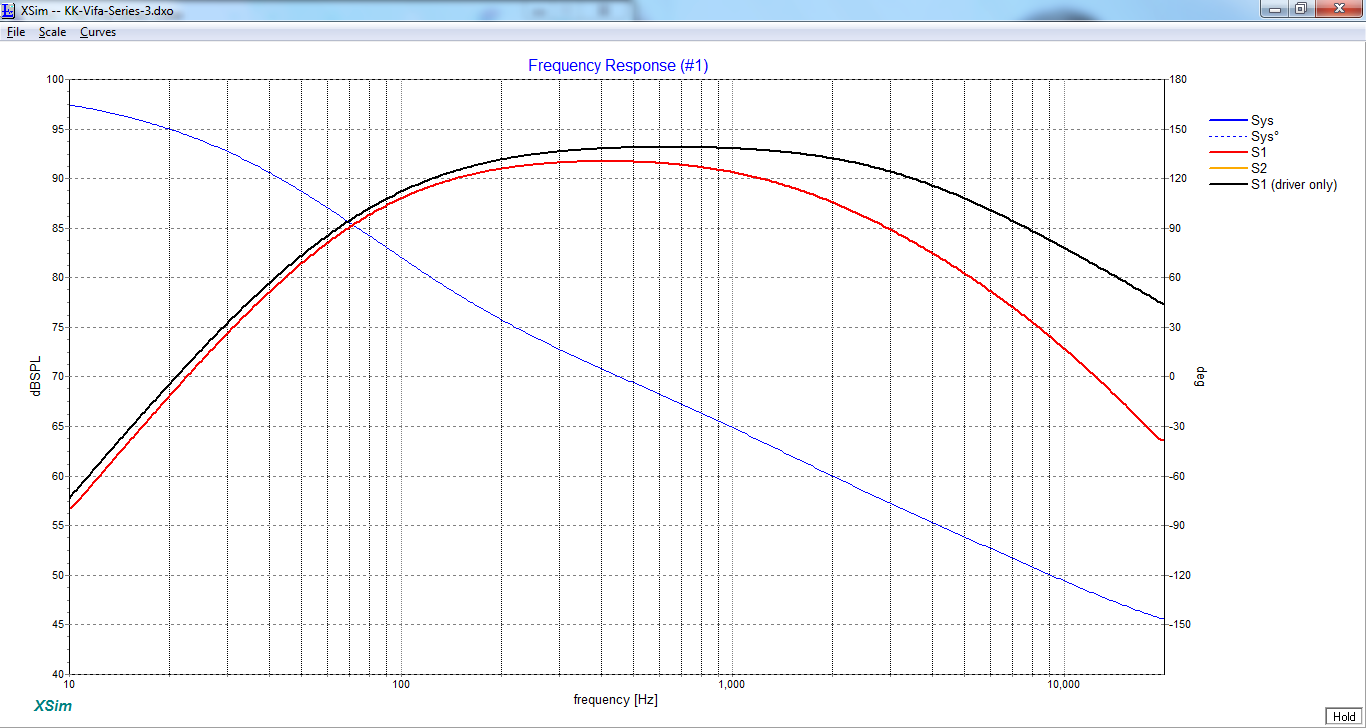
Frequency Response - only tweeter crossed @ 2KHz
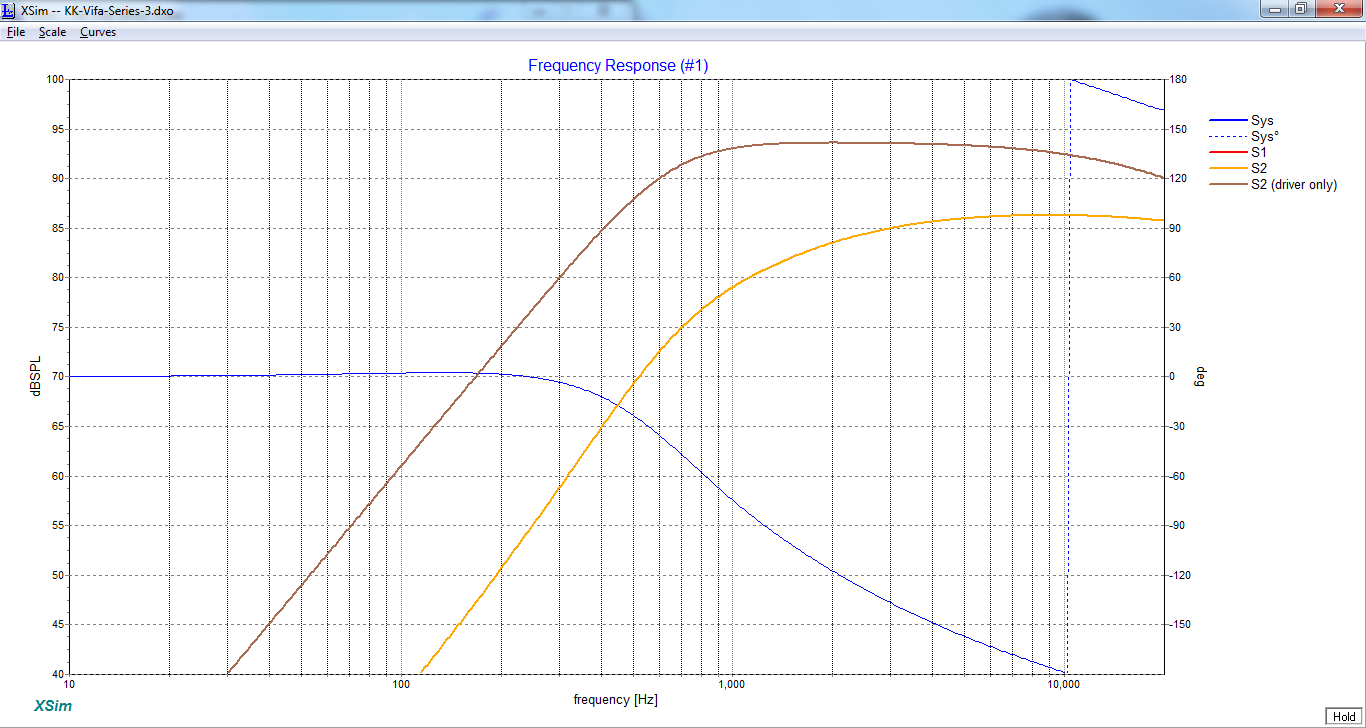
Combined Frequency Response - @ 2KHz
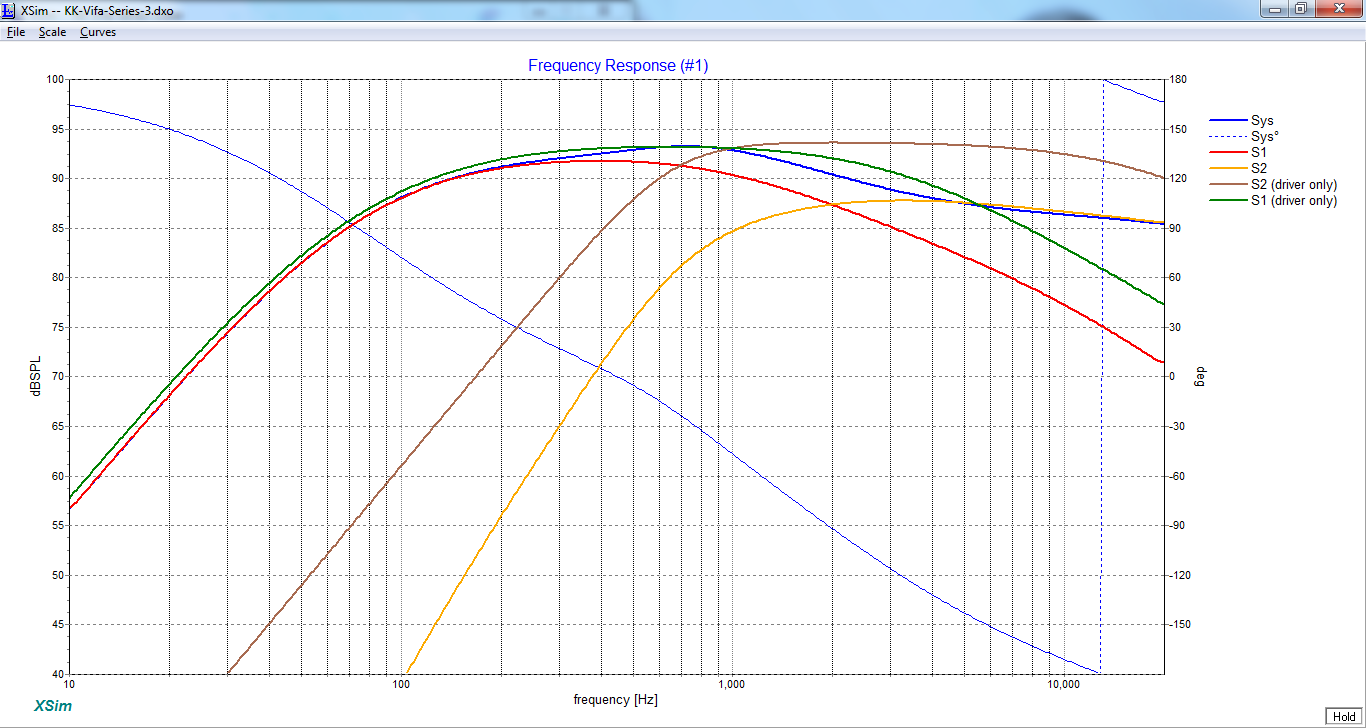
Impedance
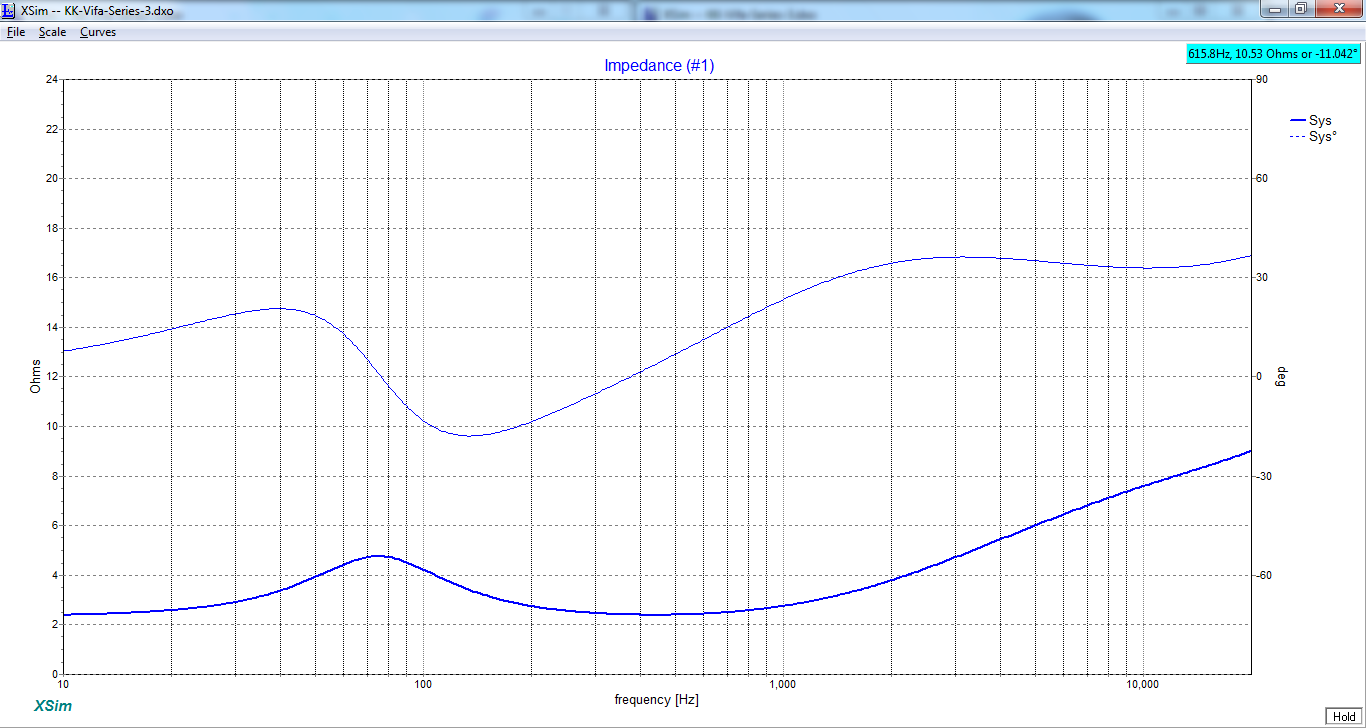
Impedance at resonance is damped by the resistance.
The capacitorless crossover:
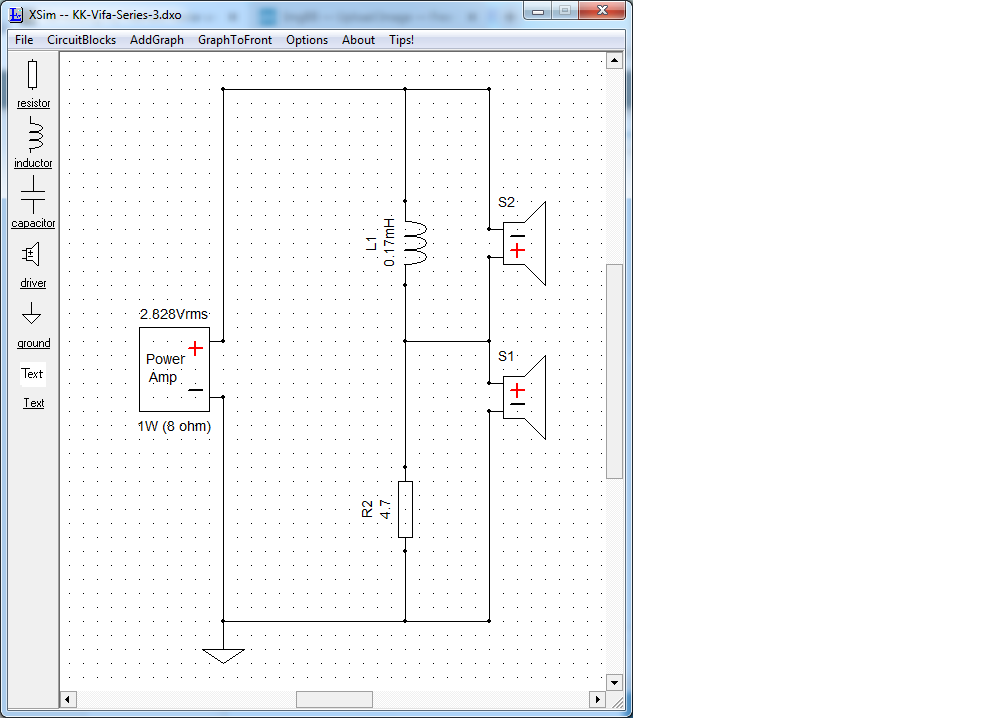
Frequency Response - only woofer crossed @ 2KHz.

Frequency Response - only tweeter crossed @ 2KHz

Combined Frequency Response - @ 2KHz

Impedance

Impedance at resonance is damped by the resistance.
The capacitorless crossover:

Last edited:
An inductor can be used in parallel as Hari has done to shunt low frequencies to the tweeters. 2nd order xos for tweeters have an inductor wired in parallel to the tweeter with a cap in series.I feel the same.There is no cap in series with tweeter and possibly its unprotected.
But there are some other issues in doing it this way and depends on the output impedance of the amplifier as well.
In the above diagram, the resistor is in parallel to the woofer and will inhibit the power delivered to the woofer as well.
There is a minor drop in a SPL less than 0.25dB in the SPL but not noticed in actual listening. My puny 6W + 6W SET is easily able to drive these speakers without any strain. Ideal amplifier would be a current amplifiers around 60+ watts in AB and 30+ watts in class A. These amps should be able to handle low impedance which goes as low as 2.8 ohms from 200Hz till around 800Hz. For my 300B there was no issue of overload or distortion. The woofer is a 4 ohm nominal impedance, i would have preferred a higher 8 ohms impedance woofer for this duty.An inductor can be used in parallel as Hari has done to shunt low frequencies to the tweeters. 2nd order xos for tweeters have an inductor wired in parallel to the tweeter with a cap in series.
But there are some other issues in doing it this way and depends on the output impedance of the amplifier as well.
In the above diagram, the resistor is in parallel to the woofer and will inhibit the power delivered to the woofer as well.
Check out our special offers on Stereo Package & Bundles for all budget types.
Similar threads
- Replies
- 33
- Views
- 48K
- Replies
- 17
- Views
- 2K
- Replies
- 28
- Views
- 46K
D
- Replies
- 43
- Views
- 14K



